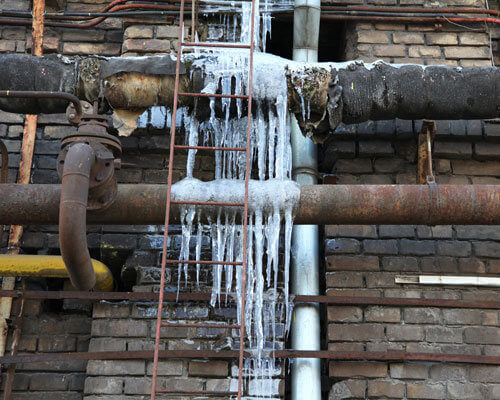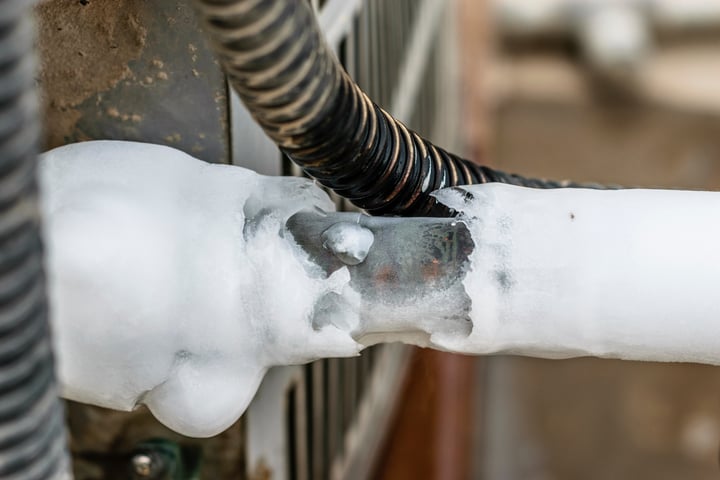Advice on Unfreezing a Frozen AC Pipe - Reinstating Proper Operation
Advice on Unfreezing a Frozen AC Pipe - Reinstating Proper Operation
Blog Article
Every person has got their private idea when it comes to What Causes AC Pipes To Freeze?.

Intro
Finding that your air conditioning pipeline is frozen can be worrying, especially during warm summer months when you rely upon your ac unit one of the most. Recognizing what to do in such a situation is crucial to avoid further damages to your cooling system and ensure your comfort inside your home.
Understanding the Causes
A number of variables can add to the cold of an air conditioner pipe. Comprehending these reasons can assist you address the problem efficiently.
Absence of Airflow
One usual root cause of an icy a/c pipe is inadequate air movement. When the airflow over the evaporator coil is restricted, it can create the coil to go down below freezing temperature level, causing ice development on the pipe.
Reduced Refrigerant Levels
Not enough cooling agent levels in your AC system can additionally cause a frozen pipe. Reduced cooling agent levels can cause the pressure in the system to drop, leading to the cold of moisture on the evaporator coil.
Cold Weather Conditions
In chillier environments, freezing temperature levels outside can contribute to the cold of air conditioning pipes. If your air conditioning device is not appropriately protected or if there are leaks in the ductwork, cool air can penetrate the system, causing the pipeline to freeze.
Dirty Air Filters
Dirty or clogged up air filters can restrict air movement in your a/c system, leading to numerous issues, including an icy pipe. It's vital to replace or clean your air filterings system on a regular basis to ensure appropriate air movement and avoid ice build-up.
Indicators of a Frozen Air Conditioner Pipe
Acknowledging the indications of a frozen AC pipeline is crucial for timely action.
Lowered Airflow
If you observe a considerable decline in air flow from your vents, it can show a frozen pipe.
Ice Buildup on the Pipe
Visible ice buildup on the cooling agent line or the evaporator coil is a clear sign of a frozen air conditioning pipe.
Unusual Sounds from the Unit
Uncommon audios, such as hissing or bubbling, originating from your a/c device can signal that there's ice present on the pipe.
Immediate Actions to Take
When faced with a frozen air conditioner pipeline, it's important to act rapidly to prevent more damage to your cooling system.
Turning off the air conditioning
The primary step is to turn off your air conditioning system to avoid the system from running and intensifying the concern.
Looking for Blockages
Check the location around the interior system for any kind of blockages that might be blocking air flow, such as furniture or curtains.
Thawing the Pipe
You can use mild approaches like putting towels soaked in cozy water around the icy pipeline to help thaw it slowly.
Preventive Measures
Taking safety nets can aid prevent future occurrences of a frozen air conditioning pipe.
Normal Maintenance Checks
Arrange routine upkeep consult an expert HVAC specialist to guarantee that your a/c system is running effectively.
Transforming Air Filters
Regularly replace or cleanse your air filters to stop airflow restrictions and preserve optimal efficiency.
Shielding Exposed Pipes
If your AC pipes are revealed to cold temperatures, consider shielding them to avoid freezing during winter months.
Seeking Professional Help
If DIY approaches fall short to solve the issue or if you're not sure about just how to continue, it's ideal to look for support from a certified HVAC professional.
When DIY Methods Fail
If your attempts to thaw the pipe or address various other issues are not successful, it's time to contact a specialist.
Value of Hiring a Professional HVAC Technician
A certified HVAC professional has the knowledge and devices necessary to detect and repair problems with your AC system safely and properly.
Final thought
Managing an icy AC pipeline can be an aggravating experience, however recognizing exactly how to respond can assist minimize damages and restore convenience to your home. By recognizing the reasons, recognizing the indicators, and taking prompt action, you can effectively attend to the problem and avoid future events.
What to Do If Your AC Line Is Frozen
Make Sure All Supply and Return Air Vents Are Open
If you notice problems with airflow, the first thing you should do is check your supply and return vents. Supply vents distribute clean, conditioned air throughout your home. As this air becomes stale, it’s pulled into the return vent, where it’s reconditioned before being sent back out through the supply vent.
When these vents are closed, air won’t flow in the home. Before examining your AC, check the vents in every room and ensure they’re all open.
Check for a Dirty Air Filter
Another possible cause of limited airflow is a dirty air filter. Your air conditioner’s filters catch elements you don’t want to breathe in, such as dirt and dust. Over time, filters can become clogged, ultimately blocking air from flowing in and out. The lack of airflow can then cause the entire coil to freeze and will completely restrict any air from moving through it. The AC may need to be powered off for one to two days to allow the coil to thaw after replacing the filter to allow proper functioning of the unit. This debris can also accumulate on your AC’s evaporator coil, requiring a more serious repair. In general, air filters should be cleaned regularly (about every two weeks).
Assess Your Outdoor Unit
In addition to checking your AC, assessing the outdoor unit is a good idea. Also known as the condensing unit, it works with your interior unit to release heat outside. An issue with the outdoor unit can result in rising internal temperatures.
Overgrown Shrubs or Clogged Leaves
From leaves and twigs to shrubs and debris, there’s no shortage of outdoor elements that can accumulate around your condensing unit. When these elements get lodged inside the unit, they can block airflow. Fortunately, removing the blockage can solve the problem.
Sounds of a Broken Fan
Shrubs and leaves aren’t the only things that can impede your outdoor unit’s airflow. If the fan is broken, the unit won’t be able to properly get rid of heat — which means the internal temperature won’t go down. First, make sure the fan is spinning. If it is, check for the following sounds of a broken fan:
Buzzing Rattling Screeching Hissing Clicking Preventative Measures
Nobody wants to deal with a frozen AC line. In addition to causing problems with your air conditioner, they require professional repairs. On the bright side, there are preventative measures you can take to help ensure this issue doesn’t arise in the first place.
https://www.coopergreenteam.com/blog/what-to-do-if-ac-line-frozen

I am very involved in What Causes AC Pipes To Freeze? and I'm hoping you enjoyed reading the blog entry. You should set aside a second to distribute this post if you enjoyed it. I take joy in reading our article about Have a Frozen AC Line? Here’s How to Fix It.
Contact Us Report this page